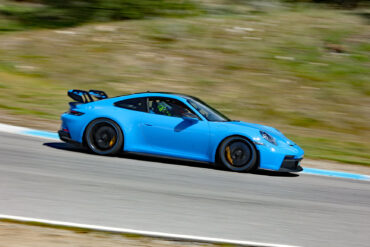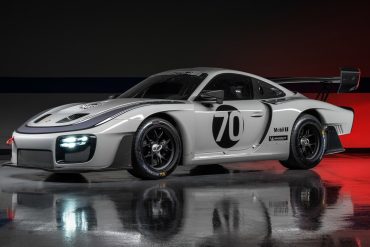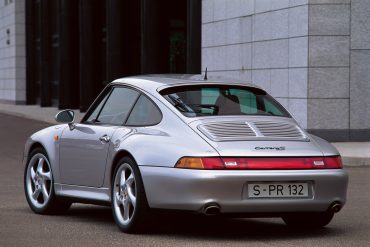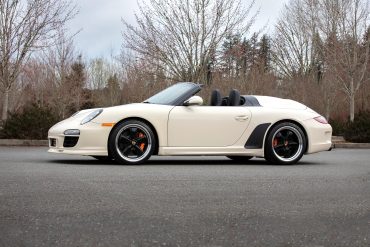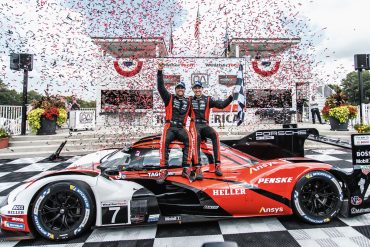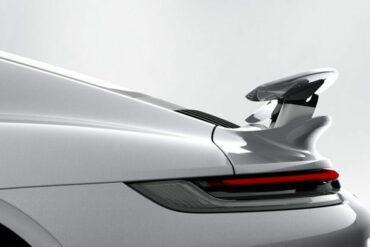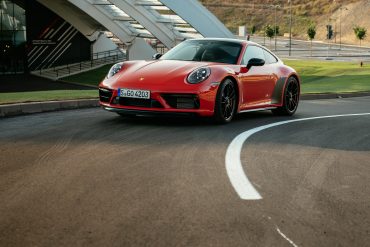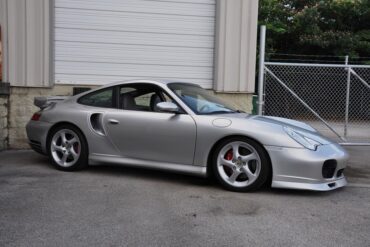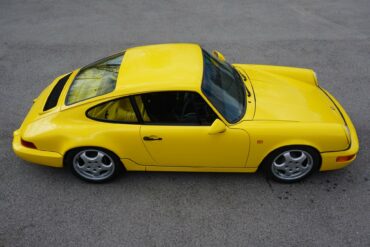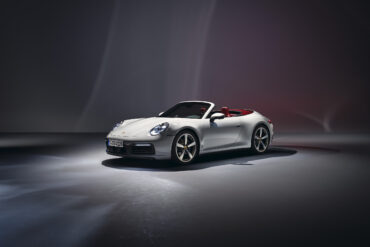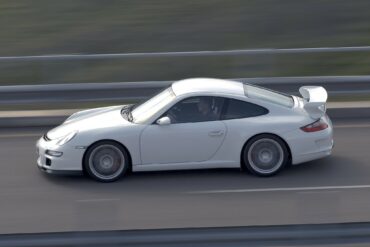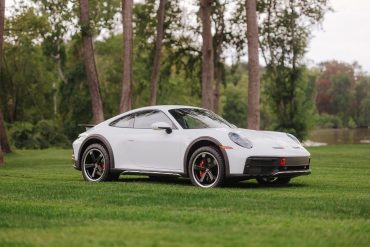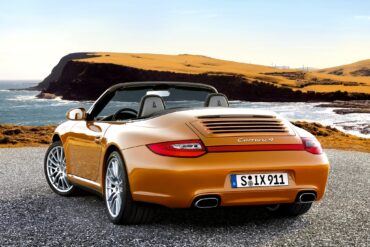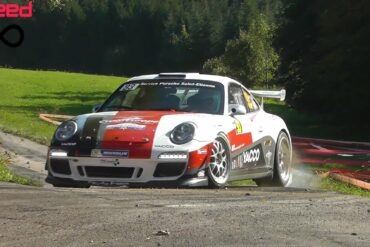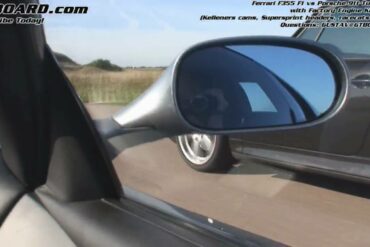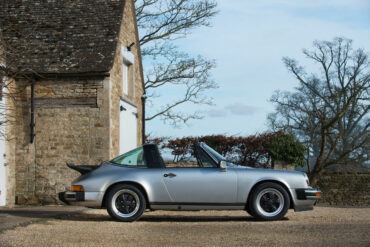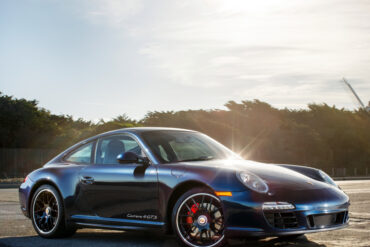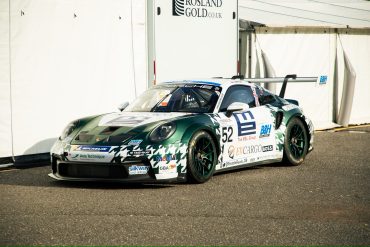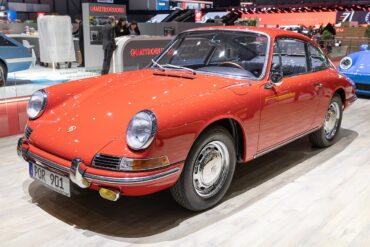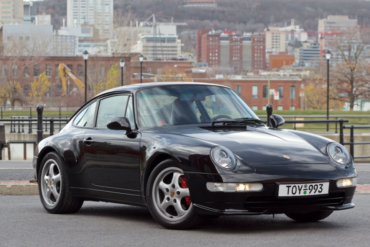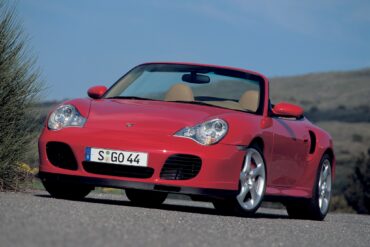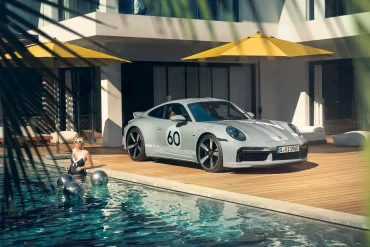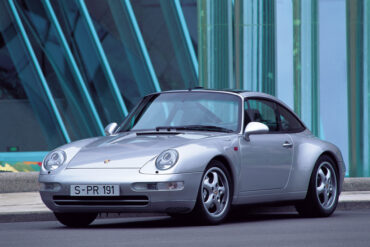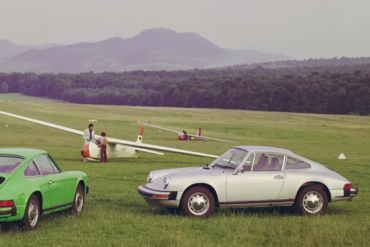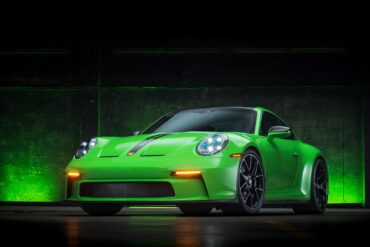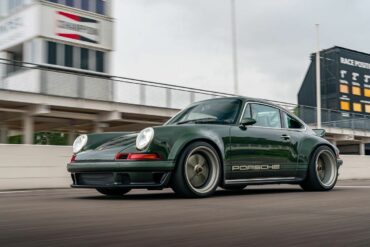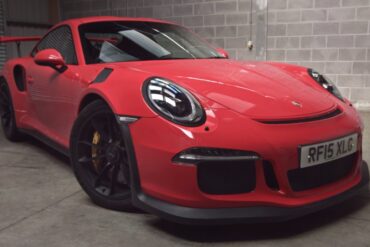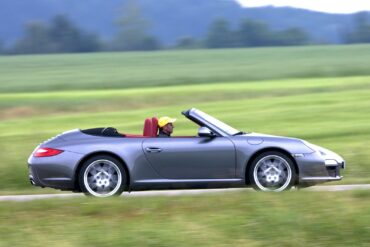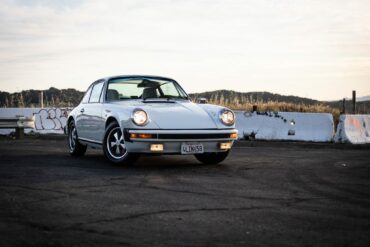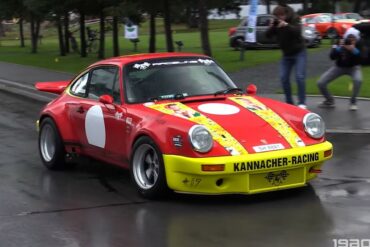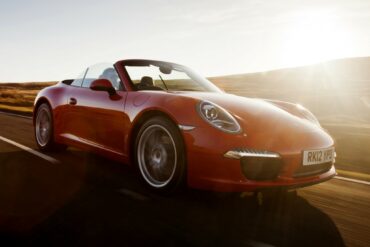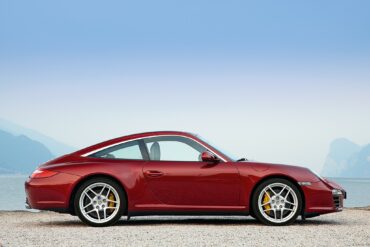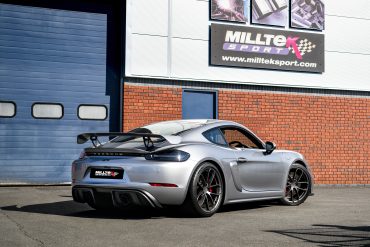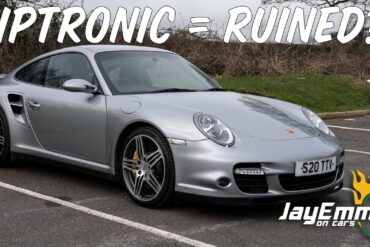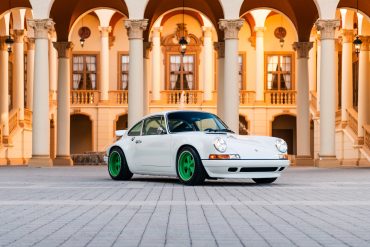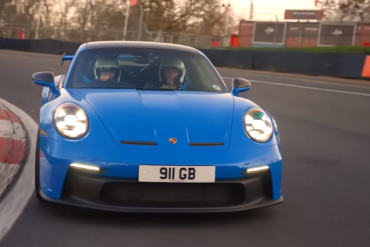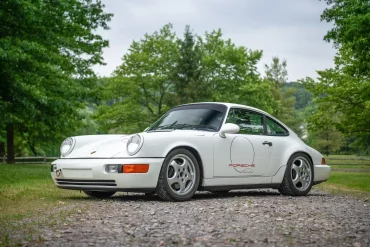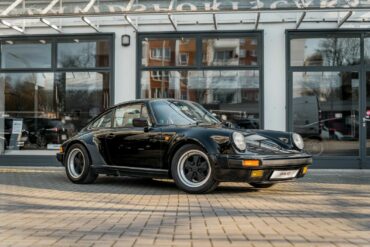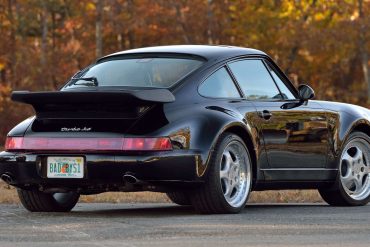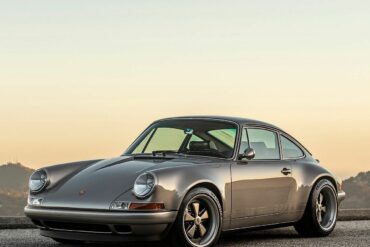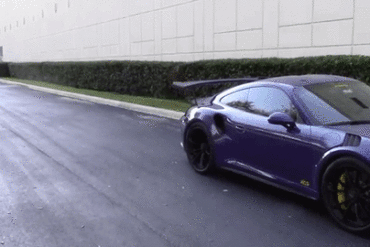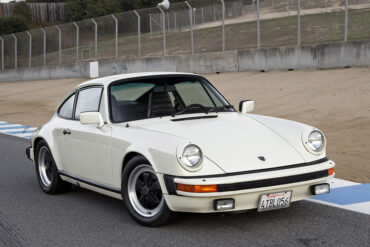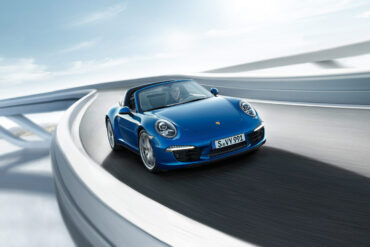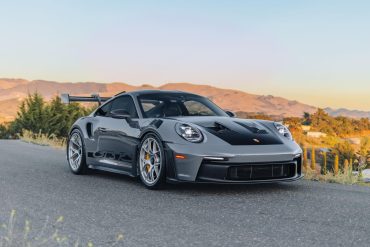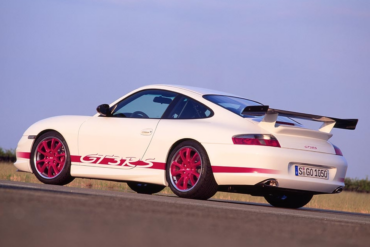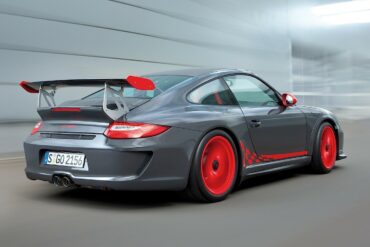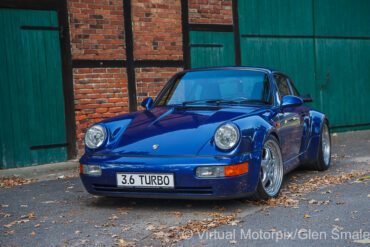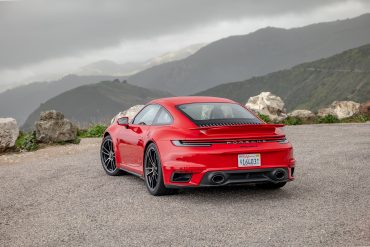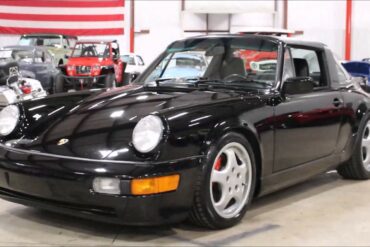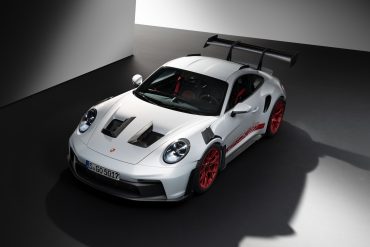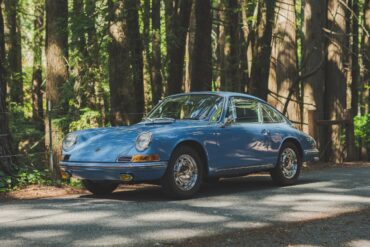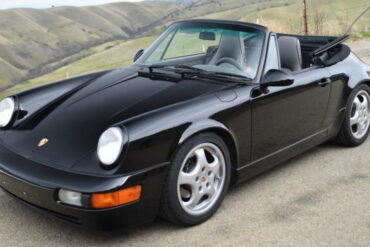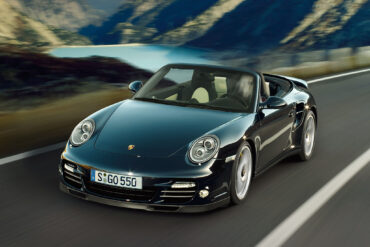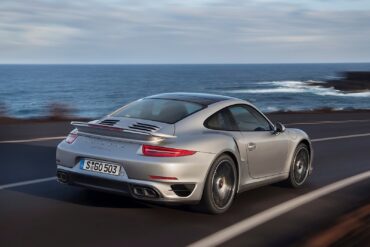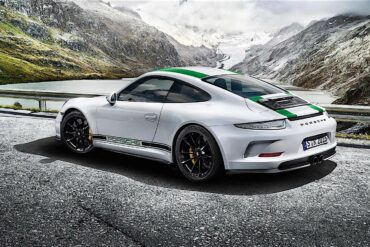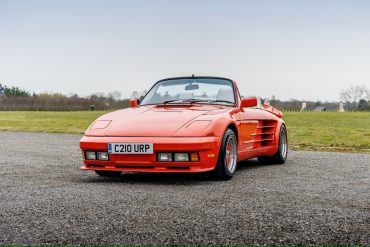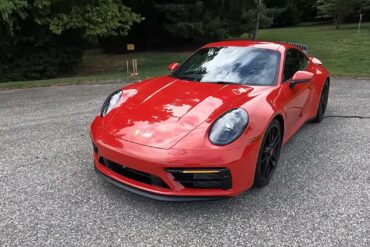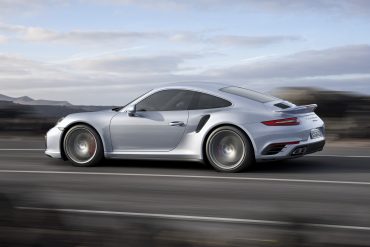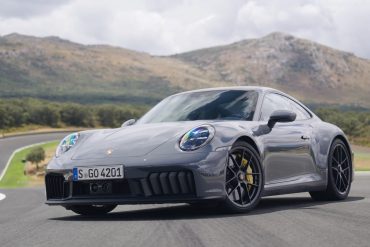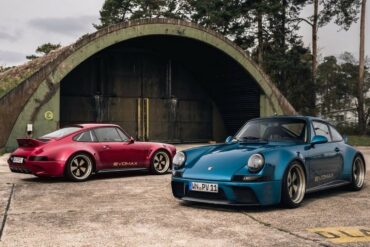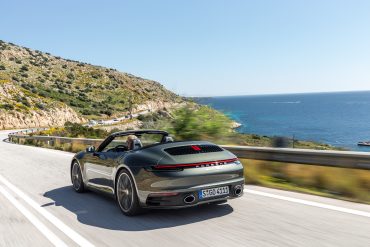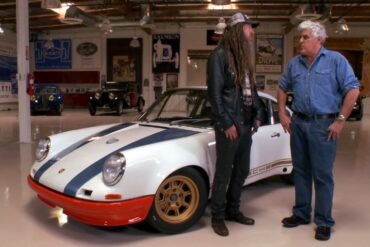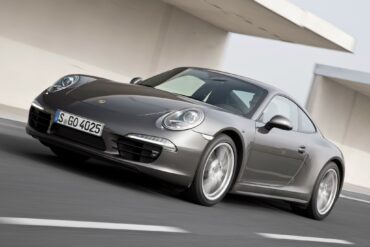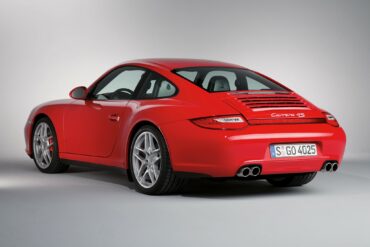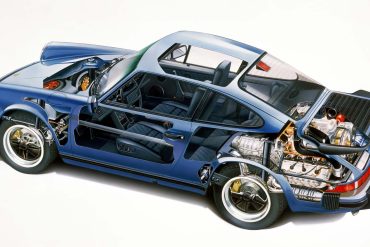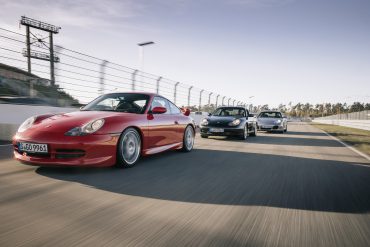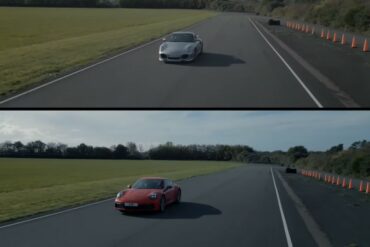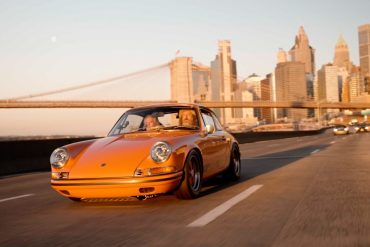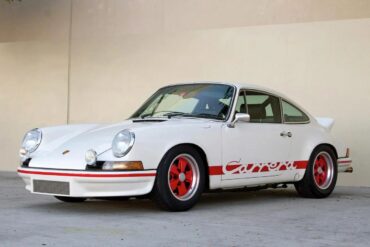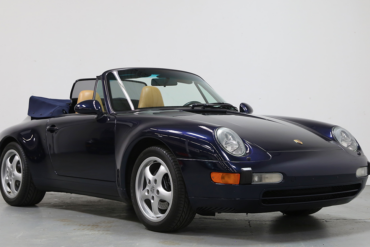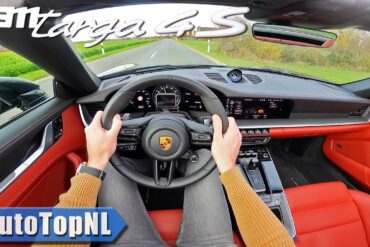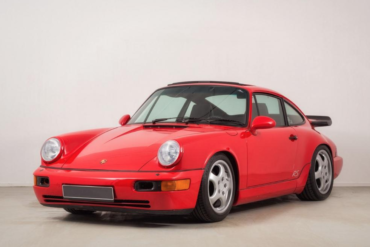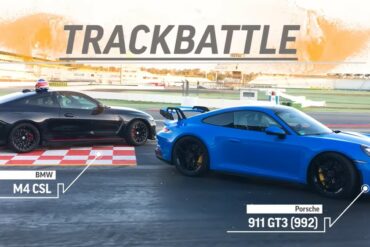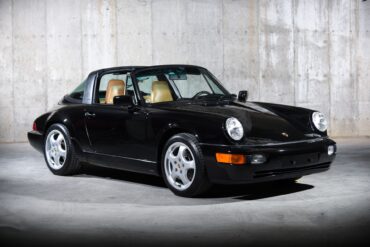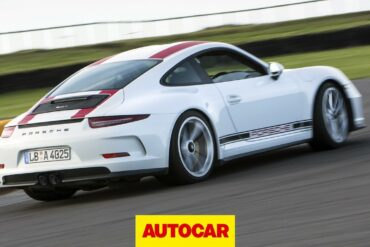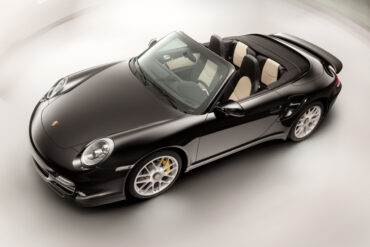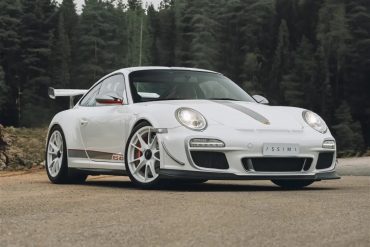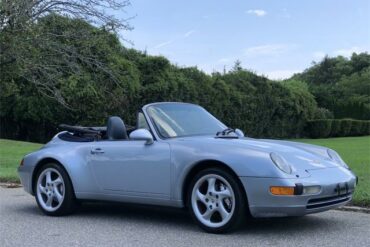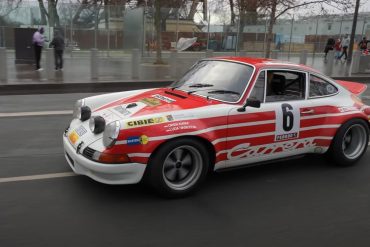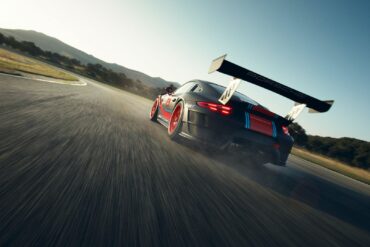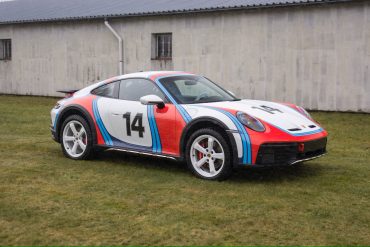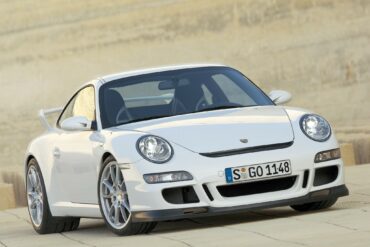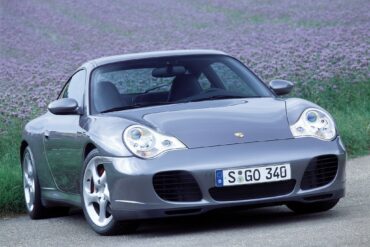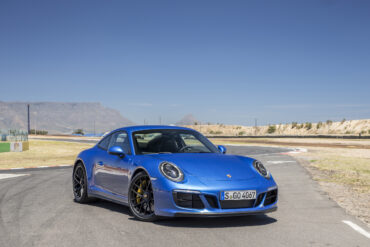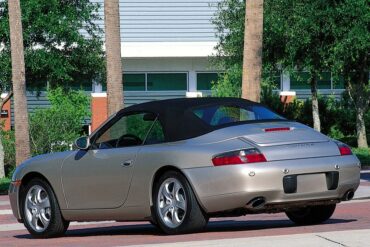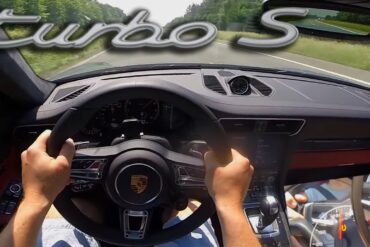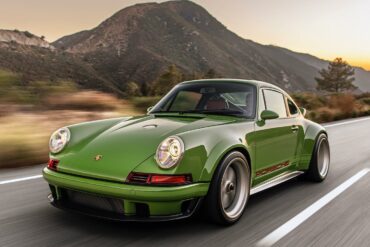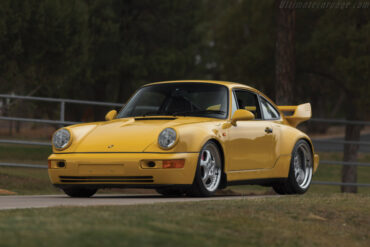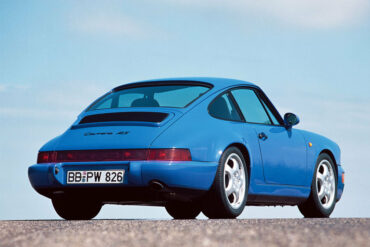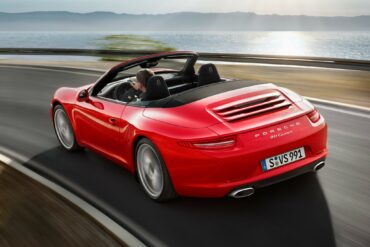I recently completed a back-to-back track day event at Area 27 Motorsports Park a couple of weeks ago. There was...
Porsche 911
All
- Porsche 912
- 911 Carrera RS 2.7
- Porsche 901 (911)
- Porsche 911 (F-Series)
- Porsche 911 (991)
- Porsche 911 (G-Series)
- Porsche 911 (964)
- Porsche 911 (993)
- Porsche 911 (996)
- Porsche 911 (997)
- 911 Speedster Concept
- Porsche 911 (992)
- 964 Carrera 2
- 964 Carrera 4
- ’30 Jahre’ Anniversary
- 964 Speedster
- 964 Turbo
- 964 Carrera RS
- 964 Carrera Cup
- 964 RSR
- 993 Carrera
- 993 Carrera 4
- 911 Edition 50
- 993 Carrera 4S
- 911 2.0 Bertone Roadster
- 993 Carrera S
- 993 Targa
- 992 Sport Classic
- 993 Turbo
- 996 Carrera
- 993 Carrera RS
- 992 America Edition 911
- 996 Carrera 4
- 993 GT2
- 996 Targa
- 993 Carrera Cup
- 996 Carrera 4S
- 996 Turbo
- 996 Turbo S
- 996 GT3
- 996 GT3 RS
- 996 GT2
- 996 GT3 Cup
- 996 GT3 R
- 996 GT3 RSR
- 997 Carrera
- 996 GT3 RS Race
- 997 Carrera S
- 997 Carrera 4
- 997 Carrera 4S
- 997 Targa
- 911 Carrera 3.0 Coupe (G-Series)
- 997 Targa 4S
- 997 Turbo
- 997 Turbo S
- 997 GT2
- 992 Carrera T
- 997 GT2 RS
- 997 Speedster
- 997 Carrera GTS
- 992 Dakar
- 997 Carrera 4 GTS
- 997 GT3 Cup
- 997 GT3 R
- 997 GT3 RSR
- 997 GT3
- 997 GT3 RS
- 997 GT3 R Hybrid
- 991 Carrera
- 991 Carrera 4
- 991 Carrera S
- 991 Carrera 4S
- 991 Targa 4
- 991 Targa 4S
- 991 Turbo
- 991 Turbo S
- 991 Carrera GTS
- 991 Carrera 4 GTS
- 991 Targa 4 GTS
- 991 911 R
- Porsche 992 GT2 RS
- 991 GT3
- 991 GT3 RS
- 991 GT2 RS
- 991 Speedster
- 991 GT3 R
- 991 GT3 Cup
- 991 RSR
- 991 Carrera T
- 992 Carrera 2
- 992 Carrera 4
- 992 Carrera S
- 992 Carrera 4S
- 992 Targa 4
- 992 RSR
- 992 Targa 4S
- 992 Carrera GTS
- 992 Carrera 4 GTS
- 992 Targa 4 GTS
- 992 Turbo
- 992 GT3 R
- 992 Turbo S
- 992 GT3
- 992 GT3 Touring
- 992 911 S/T
- 911 (G-Series)
- 992 GT3 RS
- 992 GT2 RS
- 992 GT3 Cup
- 911 Carrera 3.0 (G-Series)
- 911 S (G-Series)
- 911 Carrera RSR 2.8
- 911 SC (G-Series)
- Porsche 992 GT3 R Rennsport
- 911 S/T
- 911 Carrera 3.2 (G-Series)
- 911 (Base Model)
- 911 Turbo (930)
- 911 SC Safari
- 911 L
- 911 Carrera RSR Turbo 2.1
- 911 T
- 911 Carrera RSR 3.0
- 911 E
- 911 S
- 911 SC San Remo
- 911 Carrera 3.2 Clubsport
- 911 R
- Porsche 953
- 911 Carrera RS 3.0
- 911 T/R
- 911 Carrera 25th Anniversary
- 911 SC RS
- 911 Turbo LE
- 911 Carrera Commemorative
- 911 Carrera 2.7 (G-Series)
- 911 3.2 Speedster
- 911 Turbo 2.7
- 964 Turbo S
Unveiled at Porsche’s 70th-anniversary celebration at Rennsport Reunion VI in California in September 2018, the new 935 was a limited-edition,...
Whenever Porsche brings out a new powertrain, be it the first performance hybrid in the 918 Spyder, the all-electric dual...
Porsche 911 Spare Parts Catalogs (993, 1994 – 1998 Model Year) These official Porsche PET Diagrams and codes for the...
The 2011 Porsche 911 Speedster is a unique blend of classic features from the original Speedster model, the 356 Speedster,...
Success at Road America Round eight of the IMSA WeatherTech SportsCar Championship at Road America in Wisconsin took off with...
Autoblog today published an in depth article investigating the new aerodynamic features of the upcoming 2021 Porsche 911 Turbo S. Not...
2022 Porsche 911 Carrera 4 GTS (992) Technical Specifications Model 911 Carrera 4 GTS Design and cylinders Twin-turbo boxer 6 Number...
2003 Porsche 911 Turbo X50 (996) Technical Specifications Price $ $133,000 Engine Aluminum Alloy, Twin Turbo Flat-6 Position Rear Longitudinal...
1991 Porsche 911 Carrera 4 Lightweight (964) Technical Specifications Engine Type Flat 6 (M64/03 Flat-6) Induction Naturally Aspirated Cooling Air/oil-cooled...
2021 Porsche 911 Carrera Cabriolet (992) Technical Specifications Model 911 Carrera Cabriolet Engine Engine layout Rear Engine Engine type Boxer,...
2008 Porsche 911 GT3 (997) Technical Specifications Engine Type Flat 6 Induction Normally-aspirated Cooling Water-cooled Valvetrain Double overhead camshafts Injection Port...
Live on Bring A Trailer is a delivery mileage example of Porsche’s first publicly available rally car, the 911 Dakar....
2009 Porsche 911 Carrera 4 Cabriolet (997.2) Technical Specifications Engine Type Flat 6 Induction Normally-aspirated Cooling Water-cooled Valvetrain Double overhead camshafts Injection...
Porsche 997 GT3 Rally Cars Sounding Spectacular...
Ferrari F355 vs Porsche 911 Turbo (993) Ferrari F355 F1 vs Porsche 911 Turbo (993) with Engine Kit 430 HP...
1976-1977 Porsche 911 Carrera 3.0 Targa Pictures & Gallery...
2011 Porsche 911 Carrera 4 GTS Coupe (997) Technical Specifications Engine Type Flat 6 Induction Normally-aspirated Cooling Water-cooled Valvetrain Double overhead...
The Cup car, styled in a spectacular manner, stands as the first racing car based on the current 992 generation...
1963 – 1964 Porsche 901 Technical Specifications Built At Germany Body Stylist Ferdinand Engine Flat-6 Position Rear, Longitudinal Aspiration Natural...
1995 Porsche 911 Carrera 4 (993) Technical Specifications Engine Type Flat 6 Induction Naturally Aspirated Cooling Air/oil-cooled Valvetrain Single overhead...
Introducing this new top-of-the-range model, Porsche is once again placing a 911 Turbo Cabriolet right at the top of the family after a break of 14 years: From 1987 - 1989 the Porsche 930, as the first Turbo was code-named within the Company, set the first milestone in the history of these outstanding open-air sports cars. With cylinders still featuring two valves each at the time, the 3.3-litre power unit driving the first Turbo Cabriolet offered maximum output quite unique at the time of 300 bhp or 221 kW. Acceleration from 0 to 100 km/h was in 5.2 seconds and the car had a top speed of 260 km/h or 161 mph.
2023 Porsche 911 Sport Classic (992) Technical Specifications The 2023 Porsche 911 Sport Classic is based on the 911 Turbo S...
The Targa was the half-convertible bodywork offered by Porsche for the 911. By removing only a part of the roof and leave the closed-coupe rigid structure. It was offered a better sensation than a sunroof and it wasn't as heavy as a convertible. Unlike the previous Targa generation, the 993 featured a glass panel over the front passengers instead of a fabric one. The rest of the bodywork looked similar to the Carrera. The engine was a completely reworked flat-six, with a 3.6-liter displacement with the VarioCam system, which offered 285 hp. It was mated either with a 6-speed manual or a 4-speed automatic.
Also produced for the 1976 "model year", for the U.S. market, was the 912E, a 4-cylinder version of the 911 like the 912 that had last been produced in 1969. It used the I-series chassis and the 2.0 Volkswagen engine from the Porsche 914. In all, 2092 units were produced. In 1976, the Porsche 924 took this car's place for the 1977 "model year" and beyond. The power was supplied by a 4-cylinder high-performance fuel injection motor also used in the Volkswagen 411.
The Touring makes sense for those who envision their GT3 more as a daily mode of transportation than a track...
Porsche Cars North America has announced that second-quarter retail deliveries in the United States totaled 21,304 cars contributing to the...
Singer Vehicle Design – Oxford Commission Today, we take a closer look at the Singer Vehicle Designs Oxford Commission. The...
Watch evo’s Jethro Bovingdon put the new Porsche 911 GT3 RS through its paces on the track. Is it the...
2010 Porsche 911 Carrera 4S Cabriolet (997.2) Technical Specifications Engine Type Flat 6 Induction Normally-aspirated Cooling Water-cooled Valvetrain Double overhead camshafts Injection...
Porsche 911 (G-Body) Sales & Production Numbers (1974 – 1989) ...
A compilation video of the 2022 Bernina Gran Turismo hillclimb race winner, the beautiful Porsche 911 Carrera 3.0 RSR ‘IROC’...
2012 Porsche 911 Carrera Cabriolet (991) Technical Specifications Engine Type Flat 6 Induction Normally-aspirated Cooling Water-cooled Valvetrain Four overhead camshafts, four...
2010 Porsche 911 Targa 4S (997.2) Technical Specifications Engine Type Flat 6 Induction Normally-aspirated Cooling Water-cooled Valvetrain Double overhead camshafts Injection Direct...
The leading premium performance exhaust manufacturer, Milltek Sport, is working on creating an even more dynamic Porsche 911 (992) with...
Greatest Porsche GTs – The Ultimate Head to Head Porsche has been making GT cars for 20 years, and its...
Established in Los Angeles in 2009, Singer Vehicle Design is a prominent figure in reimagining Porsche 911s from the 964-generation...
In the latest video from Porsche, we have British professional tennis player, Emma Raducanu taking a Porsche 911 GT3 for...
Manufactured by Porsche Motorsport for use in their U.S. customer racing series, the Porsche 964 Carrera Cup vehicles originated from...
Porsche introduced a new wide-body package option. Known as the M491 option it was commonly known as the "Turbo-Look". It gave the naturally aspirated cars the look and style of the 930 Turbo with wide wheel arches and the distinctive "tea tray" tail. It wasn't just about looks however, because M491 also got you the stiffer suspension shared with the Turbo and the superior Turbo braking system as well as the wider Turbo wheels. It was available on the Coupe, Cab and Targa.
Porsches are, by nature, expensive cars. Still, it’s hard not to notice when one sells for over a million dollars,...
Singer Vehicle Design – Canyon Drive Commission Today, we take a closer look at the Singer Vehicle Designs Canyon Drive...
In case you’re wondering how the GT3 RS came to be known as the “ultimate Porsche 911”, then you should...
Manthey PureRxcing has won the six-hour race at the Autodromo José Carlos Pace in São Paulo, clinching its second and...
Porsche Option Codes – Porsche 911 (1978 Model Year) Looking to decode your 1978 Porsche 911 option codes? Want to...
1984-1989 Porsche 911 Carrera 3.2 Cabriolet Pictures & Gallery...
2014 – 2015 Porsche 911 Targa 4 Pictures & Gallery ...
The 2023 Porsche 911 GT3 RS features a practical and aggressive exterior design adapted from the Le Mans class-winning 911...
2004 Porsche 911 GT3 RS (996) Technical Specifications Engine Type Flat 6 Induction Naturally Aspirated Cooling Water-cooled Valvetrain Double overhead...
2010 Porsche 911 GT3 RS (997.2) Technical Specifications Engine Type Flat 6 Induction Normally-aspirated Cooling Water-cooled Valvetrain Double overhead camshafts Injection...
Engine based on modified 3.6 litre 964 unit. Speedline wheels with big red brake calipers. Lessons learned in the Carrera Cup series proved the reliability of the new 3.6-litre engine. An additional three millimetres on the bore and two millimetres on the stroke, resulted in an increase in capacity of 300 cc. Combined with the turbo optimised cylinders, pistons and crank train, and an increase in the compression ratio from 7.0 to 7.5:1, this helped to boost power to 360 bhp. Torque was increased significantly to 520 Nm at 4200 rpm, up from 450 Nm at 4500 rpm in the earlier car.
2021 Porsche 911 Turbo S Coupe (992) Technical Specifications Model 911 Turbo S Engine layout Rear Engine Design and cylinders...
1991 Porsche 911 Carrera 2 Targa (964) Technical Specifications Engine Type Flat 6 Induction Normally-aspirated Cooling Air/oil-cooled Valvetrain Single overhead...
2023 – Present Porsche 911 GT3 RS (992) Pictures & Gallery ...
The Porsche 911 was developed as a replacement for the highly successful Porsche Model 356. The Porsche 911 was larger, more...
1994 Porsche 911 Carrera 2 Cabriolet (964) Technical Specifications Engine Type Flat 6 Induction Normally-aspirated Cooling Air/oil-cooled Valvetrain Single overhead...
The heart of this most exclusive high-performance athlete is of course a six-cylinder boxer boosted by two exhaust gas turbochargers with variable turbine geometry, with an increase in power over the 911 Turbo by 30 to 530 bhp (390 kW). Maximum torque is a most impressive 700 Newton-metres (516 lb-ft). At the same time this new top model comes as standard with all high-tech components available only as options on the “regular” 911 Turbo. The 911 Turbo S comes exclusively with seven-speed Porsche-Doppelkupplungsgetriebe (PDK) conveying drive power to PTM all-wheel drive.
Our Favorite Cars In A Mega Drag Race The Ferrari’s the most powerful car in this line-up, with a 3.9-litre...
2014 Porsche 911 Turbo S (991) Technical Specifications Engine layout Rear Engine Engine type Twin Turbo Boxer w/ VTG Cylinders 6...
2016 Porsche 911 R (991) Technical Specifications Engine layout Rear Engine Engine type Boxer Cylinders 6 Valves per cylinder 4 Construction...
Porsche 997 GT3 RS Review The Generation 2 version of the Porsche GT3 RS (997.2) is considered by many to...
The Gemballa Cyrrus, based on the Porsche 911 Carrera 3.2 Cabriolet, debuted in 1986 and immediately captivated the everyone’s attention,...
It is Redline Reviews’ Editor in Chief Sofyan Bey to turn to give a review of – and fall in...
2017 – 2019 Porsche 911 Turbo (991.2) Pictures & Gallery ...
The iconic Porsche 911 gets a dramatic makeover with the introduction of the new Carrera GTS T-Hybrid. The new Carrera...
Porsche 911 Backdates with Proper Racing Engines If you’re a Porsche restomods enthusiast, you are going to want to learn...
2021 Porsche 911 Carrera S Cabriolet (992) Technical Specifications PDK 992 Carrera S Cabriolet Specs Model 992 911 Carrera S Cabriolet...
2013 – 2015 Porsche 911 Carrera 4 Pictures & Gallery ...
2012 Porsche 911 Carrera 4S Coupe (997.2) Technical Specifications Engine Type Flat 6 Induction Normally-aspirated Cooling Water-cooled Valvetrain Double overhead camshafts Injection...
History Long regarded as the best entry-level air-cooled 911, the Carrera 3.2 remains highly desirable. It was the final evolution...
The new 911 Carrera GTS is the first street-legal 911 equipped with a super-lightweight performance hybrid. It features a 1.9 kWh...
The Porsche 996 There’s nothing really “entry level” about a Porsche 911 as a whole, and the 996-generation is responsible...
As part of Fifth Gear’s 20th Anniversary, they pit the 20-year-old Porsche 911 Turbo (996) against the 911 Carrera (992)....
In a new video, Magnus Walker interviews Charles Lennon, a dentist from New Jersey, who is also the proud owner...
This particular 1973 Porsche 911 Carrera RS is a genuine M472 Touring model that was originally manufactured for the German...
1996 Porsche 911 Carrera Cabriolet (993) Technical Specifications Engine Type Flat 6 Induction Naturally Aspirated Cooling Air/oil-cooled Valvetrain Single overhead...
Hard Acceleration and Top Speed Run Another great acceleration and top speed run by the AutoTopNL team. This time in...
Porsche 911 Spare Parts Catalogs (964, 1989 – 1994 Model Year) These official Porsche PET Diagrams and codes for the...
Sport Auto’s Christian Gebhardt tests the Porsche 911 GT3 (992) against the BMW M4 CSL on the Hockenheim-GP track....
In their most recent video, MotorWeek brought the all-new 2023 Porsche 911 GT3 RS to Roebling Road Raceway in Bloomingdale,...
Porsche Option Codes – Porsche 911 (1991 Model Year) Looking to decode your 1991 Porsche 911 option codes? Want to...
The Porsche 911 R On Track The phenomenal Porsche 911 R stars in our penultimate video from Britain’s Best Driver’s...
2013 Porsche 911 Turbo S Cabriolet (997) Technical Specifications Engine Type Flat 6 Induction Twin-turbocharged Cooling Water-cooled Valvetrain Double overhead camshafts...
The 997-generation 911 GT3 RS 4.0 from Porsche represents the outcome of extensive testing on both open roads and in...
1997 Porsche 911 Carrera 4 Cabriolet (993) Technical Specifications Engine Type Flat 6 Induction Naturally Aspirated Cooling Air/oil-cooled Valvetrain Single...
The Carrera RSR 3.0 stands as a rare gem among Porsches, renowned as one of the most triumphant Group 4...
2018-2019 Porsche 911 GT2 RS Clubsport Race Version (991.2) Technical Specifications Concept Single-seater near-standard non-road-homologated race car Basis Porsche 911...
991.2 Porsche 911 GT3 RS Review We go for a drive in the 2018 Porsche 911 GT3 RS. And we...
Unveiled at the 2022 Los Angeles Auto Show, the 911 Dakar pays tribute to the Porsche 953’s triumphant victory in...
If the 996.1 911 GT3 was all about the engine, in the 997.1 completes the rest of the formula. The surgical clarity of its transmission, steering, brakes, pedal weights and heights, and overall chassis balance represented a clear step-change from its regular 997 911 siblings. But the engine was still the heart of the car, the water-cooled 3.6-liter flat-six boasting a new intake and a new exhaust compared with the 996 versions. Official output was 415 hp, though insiders admit some engines made close to 430 hp. Launched in 2006, today this is in many ways the sweet-spot GT3, way more affordable than the later 4.0.
In 2002, the entire generation of the 996 was facelifted. The Carrera 4S Cabriolet was introduced in the lineup with the new engine and the Turbo bodywork. Many publications called the Carrera 4S the sweet spot in the 911 lineup when it was introduced, providing more performance than the base car without the exorbitant pricing of a Turbo or GT2. The Carrera 4S paired the aggressive bodywork and suspension of the Turbo with the base Carrera 4 drivetrain, though it didn't get the Turbo's huge rear wing. It’s easily identified by “Carrera 4S” badging and a large reflective strip on the rear end, spanning the gap between the taillights.
2018 Porsche 911 Carrera 4 GTS (991.2) Technical Specifications Engine Engine layout Rear Engine Engine type Boxer, twin-turbo Cylinders 6 Valves...
2000 Porsche 911 Carrera 4 Cabriolet (996) Technical Specifications Engine Type Flat 6 Induction Normally-aspirated Cooling Water-cooled Valvetrain Double overhead camshafts...
Originally built by German tuner Gemballa, the Avalanche was more than just a cosmetic upgrade. Boasting a powerful single-turbo engine...
Porsche 911 Turbo S 991 MK2 AUTOBAHN POV Porsche 911 Turbo S 991 MK2 AUTOBAHN POV 295km/h by AutoTopNL...
Singer Vehicle Design – Unico Commission Today, we take a closer look at the Singer Vehicle Designs Unico Commission. The...
The 964 Carrera RS 3.8 was produced as a base for homologation for the venerable 3.8 RSR. It was unveiled in 1993 and produced in a very small series by Porsche’s Racing Department in Weissach-Flacht, and was an extreme evolution of the 964 Carrera RS that was released two years prior. It featured the wide-body look of the Type 964 Turbo, a massive rear spoiler, and three-piece “Speedline for Porsche” wheels with 235/40 and 285/35 tires, making it distinctively more aggressive in appearance than the fairly restrained styling of the Carrera RS of 1992 and capable of providing significantly more mechanical grip.
1991-1992 Porsche 911 Carrera RS (964) Technical Specifications Engine Type Flat 6 Induction Naturally Aspirated Cooling Air/oil-cooled Valvetrain Single overhead...
2015 Porsche 911 Carrera Cabriolet (991) Technical Specifications Engine Type Flat 6 Induction Normally-aspirated Cooling Water-cooled Valvetrain Four overhead camshafts, four...


